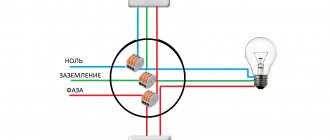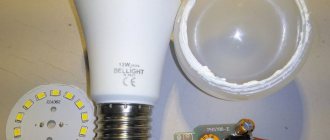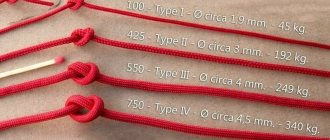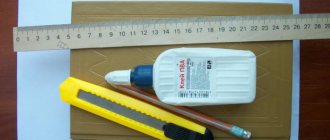Faced with a completely discharged battery somewhere along the way, the car owner finds himself in a difficult situation. You either have to look for a donor car to light a cigarette by connecting the car starter to a third-party power source. An important point: in the trunk you must have special thick cables equipped with clamps. It is not necessary to purchase them - make reliable wires for lighting your own using the instructions below.
Why not buy cables in a store?
The main reason is this: at the moment the market is saturated with inexpensive products of dubious quality, made, as a rule, in China. Finding truly reliable wires becomes problematic - car stores sell cables that are unsuitable for lighting for the following reasons:
- the cross-section of the copper conductors does not correspond to the declared current carrying capacity;
- the insulation is made too thick in order to imitate a large cross-section conductor;
- the end clamps (the so-called crocodiles) are made of tin coated with a thin layer of copper on top;
- the insulating layer is often made of polyvinyl chloride (PVC), which cracks in the cold;
- fastenings at the points of contact of copper conductors with the crocodile are not reliable.
The result of these problems is large voltage losses, in some cases reaching 1 volt per meter of cable length. This is a serious obstacle to starting a cold engine in a car with a completely dead battery. Insulation cracks can lead to a short circuit to the vehicle body and failure of the donor battery. That is why it is quite difficult for a car enthusiast ignorant of electrics to choose wires for lighting; it is easier to assemble the product yourself.
What are they?
A banal situation: winter, severe frost, you need to urgently go to a meeting (take your child to school, drop your wife off at work, help a friend get to the train station or airport). You get into the car, turn the ignition key - there is no reaction. The battery is clearly discharged. Maybe his time has come, maybe you forgot to turn off the lights at night. The situations are different, but the result is the same - the car refuses to start. There are several options to correct this unenviable situation: find a tow vehicle or run to the nearest auto store and buy a new charger. But the easiest way out of the situation is to ask the compassionate driver to light a cigarette from his personal, working car. You just need to have the starter cables with you.
The market is filled with this kind of products from Russian and foreign manufacturers. It can be budget and expensive, for cars and trucks, with different wire cross-sections and different clamp options. Devices have many names. Some call them crocodiles, others – starting-charging elements, and still others – starter cables. All these are synonyms for one product that is ready to cope with the task of transferring current from a working battery to a “dead” one.
Much attention must be paid to the cross-section of the cable, its length and the quality of the material. It is worth keeping in mind that the resistance indicator directly depends on the cross-section value. The larger it is, the less resistance. The optimal cross-section for starting elements is from 6 to 10 sq. mm.
Requirements for quality conductors
The main task of the cable “cigarette lighter” is to ensure safe transfer of current to the starter of another car with minimal losses for the donor car battery. There are a number of requirements for wires:
- voltage loss - no more than 1 V over the entire length of the cigarette lighter;
- cable type – stranded copper (consists of a large number of thin wires twisted into a single conductor);
- the minimum operating time is 30 seconds, which is exactly what is needed to start a working motor;
- current-carrying conductors must be designed for a current of at least 500 amperes;
- The minimum length of conductors is 2.5 m, the maximum is 4.5 m.
Note. The current value of 500 A is indicated for starters of cars with a power unit displacement of up to 3 liters. For powerful SUVs, small trucks and other commercial vehicles, a wire cross-section is selected that can withstand at least 850 A.
The type of cable insulation plays a big role. On a “cigarette lighter” operated in the middle zone with a minimum winter temperature of minus 40 ° C, the use of an insulating layer of rubber is allowed (for example, a flexible welding cable designed for high currents). For northern regions, a different type of insulation is required, made of frost-resistant silicone that can withstand temperatures of minus 60 °C.
Preparing the cigarette lighter for converting it into an infrared soldering iron
First you need to disassemble the cigarette lighter and remove unnecessary parts. It's very easy to do. We unscrew the plastic handle (it will come in handy), unscrew the nut located under it, and remove the plate. There will be a spring underneath that you can throw away.
Next, the cigarette lighter can be easily disassembled. We definitely won’t need the metal shell anymore, but the ceramic insulator will come in very handy. It will protect the plastic handle from overheating.
If a different cigarette lighter is used to make an infrared soldering iron, you should look on the Internet to see how it is disassembled. For example, for parts from newer VAZ models (2115 and the like), you first need to unscrew the central button from the plastic shell.
This ceramic insulator is necessary for making your own infrared soldering iron.
Let's look at all the parts that make up the cigarette lighter. In the photo example you can see everything necessary for our work. They are marked with red arrows.
These parts are needed to make a soldering iron, and the rest can simply be thrown away
Tips for choosing components
You need to understand that a set of high-quality parts will probably cost more than finished Chinese products. But in a situation where your car’s battery suddenly runs out, or another driver asks for help, the cigarette lighter wires will definitely not fail.
To make your own cigarette lighter wires, you should purchase the following components:
- stranded copper cable, brand KG or KOG, with rubber insulation, working cross-section – 35 mm2;
- stranded wire KOG1 with a cross-section of 16 mm2;
- brass crocodiles for wires, designed for a current of 500 A;
- contact connecting sleeves type GML for cable 35 square – 4 pcs.;
- terminal lugs for M8 screw and cross-section 16 mm2 – 8 pcs.;
- short M8 bolts – 8 pcs.;
- heat shrink insulating tube.
Reference. Cable products such as KG and KOG with rubber insulation are used to connect holders of electric welding machines.
The length of the wires, consisting of a thick welding cable 35 mm2, is selected simply: the “cigarette lighter” should be enough to connect two batteries with a small margin. As a rule, a length of 3 meters is enough.
A thin stranded wire of 16 squares will be used to connect the “crocodiles” with the main current-carrying conductors of large cross-section. Why is the transition to 2 cables of smaller diameter made:
- The 35 mm2 stranded conductor is quite thick. It is quite difficult to screw it directly to the clamp with one screw.
- Insulated crocodile handles cannot be pulled over a powerful cable with a cross-section of 35 squares.
- To ensure reliable electrical contact with the battery terminals, voltage should be applied to both jaws of the clamps. It is for this purpose that the manufacturer provides 2 mounting screws on each side of the crocodile.
To connect the main conductor to the clamps, it is enough to purchase 1 m of welding cable KG with a size of 16 mm2. To avoid buying expensive heat-shrinkable tubing (sold in lengths starting from 1 m), use cheaper cotton insulating tape used in electrical installations. Choose tinned copper sleeves and tips.
Soldering options
The reason that the modern market is able to offer a wide range of soldering equipment is the fact that an ordinary household soldering iron has become a tool that can be bought on every corner.
But it does not solder all modern devices. Using a soldering station, which you can make yourself, you can repair any electrical equipment, including such complex and high-precision equipment as a computer motherboard.
Before we begin the design and begin to describe a homemade digital soldering mechanism, let’s consider what a station can be and what types of soldering exist.
Stations can be roughly classified as follows:
- contact type;
- contact type without the use of lead;
- hot air type;
- combined-thermal-air type;
- dismantling type;
- infrared stations.
The simplest type is contact. Its structure is not much different from a conventional soldering iron, but the contact equipment is devoid of many design flaws that soldering irons have.
Contact soldering
The main problem with a soldering iron is excessive heating of radio components, in particular transistors, diodes, and thyristors.
Due to high temperature, semiconductor elements begin to change their current-voltage characteristics and disrupt the flow of electric current in the circuit. This is why it becomes impossible to regulate the temperature of the heating elements, in other words, a traditional soldering iron sooner or later stops “listening” - the temperature either rises indefinitely or stops growing at all.
Thus, after reaching 400 °C, soldering can only be safe due to short-term solder-tip contact.
When starting to create a contact soldering station, or choosing one of the models that are already offered on the market, you should understand that it must contain a power supply that includes galvanic isolation in its design. It is this “power supply-heater” mechanism that guarantees adequate regulation of voltage and heating temperature. Most often, the most rational heating temperature is 250-350 °C.
Non-contact soldering
Non-contact (hot air) soldering stations are such installations that are excellent for repairing mobile phones, large and small household appliances. The power of such installations is extremely high; they cope well with both lead-containing and lead-free solders.
However, it should be remembered that such devices cannot be used for BGA-type chips. Hot-air, non-contact soldering is a symbiosis of a hair dryer and a soldering iron; soldering using such equipment is very convenient and fast.
Top 10 mistakes when lighting a car
Starting the engine from another car is a common occurrence in frosty winters and when the car is stored in an open parking lot. In the garage, the car owner will always find a way to start the vehicle. If you are not lazy and remove the battery at night, then in the morning, even in severe frost, the car will start without problems. But once a problem has occurred and the engine does not start with the starter, there is no escape from the lighting procedure.
Do not make mistakes when starting your equipment from another battery. In the best case, if you do it incorrectly, you can harm your battery ; in the worst case, you can damage the electronics on a friend’s car or, even worse, cause the battery and fire.
Among the mistakes made by novice motorists, here are the ten most common blunders , which we will arrange according to the degree of danger - from least to most.
- Before lighting a cigarette, the driver does not inspect the battery for integrity , leakage, or strength of contacts.
- Neglects safety rules, primarily fire safety.
- Uses low-quality wires (insufficient cross-section, frayed insulation, with poor contacts, weak crocodiles).
- Violates the sequence of connecting contacts (deviates from the diagram).
- Connects the negative wire to the negative terminal on the discharged battery.
- He takes as a donor a battery with a smaller capacity than the one on his car.
- Allows contact of vehicles with housings or contact of the positive terminal of the wire with ground.
- Confuses the connection of the “+” and “–” contacts.
- Leaves on while lighting a cigarette.
- It is powered by a car with the engine running.
procedure will help warn drivers and prevent them from making mistakes in such a delicate matter as lighting a cigarette . By adhering to the algorithm, you can start your car with a dead battery without consequences.
Related material: Top 20 best batteries for cars: lead, AGM, gel
DIY cigarette lighter repair in 5 minutes
Car cigarette lighter failure can occur for various reasons. Therefore, repairs should be done in stages. The master needs to first look at some possible reasons, and then at others (5 steps in total). For diagnostics, the motorist will definitely need a multimeter. You also need a blowtorch, electrical tape, flash remover, a rag, and a set of additional fuses. To look at problematic contacts, you will need a flashlight or a phone with good backlight.
The repair is done like this:
- First you need to look at the condition of the fuses in the vehicle. To do this, use the instructions for the car to determine the location of the block, and check the desired fuse using a multimeter. If necessary, replace the broken safety part.
- If this does not help, then inspect the fuse block microcircuit for melts and mechanical defects. If necessary, use a soldering iron to repair the device. Also inspect the supply wiring, test it with a multimeter - if there are defects, re-solder the wires or connect them with electrical tape.
- If this also does not help, then you need to disassemble the front panel and remove the connector for inspection. If the corner fuse on the case is damaged, you need to remove it and solder the aluminum wire. You also need to clean the inner surface of dust and dirt with a rag.
- Another way: you need to use a multimeter to ring the internal contacts, as well as the external wires (red and black). If the problem is in the wires, then you need to replace or resolder them. If the problem is that the internal contacts have melted, you need to clean them with an oxidizing liquid. If all else fails, then the connector housing or other vital elements of the device have burned out - in this case, you need to buy a new connector.
- If the cigarette lighter does not work, then the problem most likely lies in the head. For example, the nichrome spiral in it burned out or the internal contacts were broken. Repairing in this case will be ineffective due to the small size of the device - to solve the problem it is better to buy a new car cigarette lighter.
How to disassemble a car cigarette lighter
To get the cigarette lighter socket you need to disassemble the front panel. It is secured with bolts, so to dismantle the master will need a Phillips screwdriver. And before carrying out work, you need to turn off the power to the battery so that the technician does not get an electric shock. Algorithm of actions:
- Find the fastening screws on the facing panel and unscrew them using a screwdriver. Find an additional screw on the side, pry the cigarette lighter tube with a screwdriver and pull it out.
- Carefully remove the backlight ring - dismantling is ready. To reinstall the panel, perform all steps in reverse order.
Many old cars use low-quality screws that will begin to break after 2-3 dismantlings. Therefore, it is recommended to purchase additional accessories for assembly.
Cigarette lighter button
There is often a small button on the car cigarette lighter that allows you to turn the device on or off to prevent electrical leakage. The button can sometimes fail due to mechanical failure or debris getting into it. If the button stops being pressed, you need to disassemble the device and inspect the button mechanism. You need to clean it of dirt and try to start the cigarette lighter again. If it doesn’t work, you need to replace the button or the entire device.
Cigarette lighter head
There is a mica semiconductor inside the cigarette lighter head, which sometimes fails. If the device stops working, it makes sense to disassemble the device, remove the old conductor and install a new one. If the problem is not solved, then the cause of the breakdown is something else. Therefore, to repair you need to use the instructions presented earlier.
Idea No. 4 – Simple wire version
There is another option for making a miniature soldering iron - using nichrome wire. To do this you will need:
- A piece of nichrome wire. You can remove it from old heating elements, wire resistors, irons, hair dryers, etc. The main characteristic of such wire is its diameter, because it determines the resistance of the coil and, accordingly, the power of the tool being manufactured. You can calculate the required length for your diameter using the formula specified in the instructions for option No. 1. The resistivity of nichrome depending on the diameter is given in the table below.
- Drill a hole in the block for copper wire 3 times larger than its diameter.
- Place a piece of copper wire in it so that it protrudes about 5 cm and secure it there with thick plaster putty, let it dry.
- Place insulation on the copper rod, which is the tip, and wind the required amount of nichrome wire, leaving a distance between the turns. Also put insulation on the ends and bring them closer to the handle. Then connect the twists with the wires. Tape them to the handle with electrical tape.
That's all, you have another simple and reliable soldering iron design, made by yourself.
We still recommend using either the first or second option, which is more understandable and easier to manufacture. As for the transformer version, although it is more powerful, it is still not so convenient to use. We hope that these photo instructions were useful for you and finally, we recommend that you watch all the video examples in which the assembly process is discussed in more detail!
Also read:
- How to solder wires correctly
- What tools should an electrician have?
- How to make a mini drill with your own hands
Video instructions for making a simple electrical appliance











